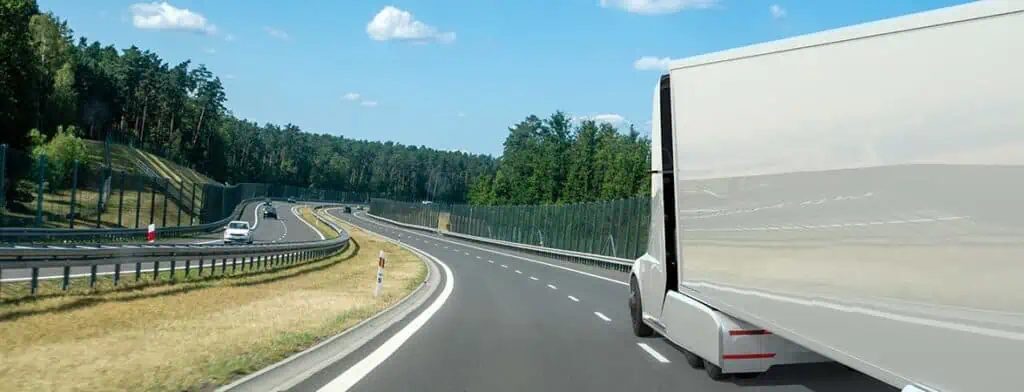The trucking industry is a major part of today’s supply chain, responsible for transporting about 70% of all goods. In a world where everything is becoming more streamlined, automated, and efficient by the day, autonomous semi-trucks are now on the horizon. From this development, many questions are being asked regarding what the outlook for autonomous semi-trucks will be. We received valuable insight from several experts in the industry to provide us with answers to some of those questions.
Will social attitudes about automated vehicles (fear of an unknown technology) add barriers to the adoption of the technology?
Tonya Davis, Contributor and Content Editor for Pride Transport
Yes with a caveat.
The truth is, truck drivers deal with new technology all the time. It’s part of their lives. What drivers worry about is the people making decisions and choices about what goes on the road who have never sat behind the wheel of a truck. Never drove long distances. Never experienced harsh weather and drivers on the road who think a truck can stop on
a dime like a bicycle.
Drivers are actually more concerned about the people who share the road with them than the technology itself. It takes a great deal of human instinct and experience to handle many of the situations that drivers find themselves faced with every single day. The worry is that the technology will not understand that and will, in no way, be able to duplicate the reaction, the intuition of a career driver.
So the barriers that will be faced are not going to be about being afraid of new technology, they will center around the concern that the new technology is going to fall short of what is actually needed to replace a human behind the wheel. That concern, if paid attention to, could possibly save lives and save money.
James Gowers, VP Strategy & Business Development for Perceptive Automata
Surveys of attitudes toward autonomous vehicles typically show that 50% to 70% of respondents would not ride in AVs today. This might seem like a high number at first glance but is actually not unusual for new technology like this. Similar concerns existed during the introduction of many similarly disruptive technologies, including trains, the automobile, airplanes, electricity, the telephone, microwave ovens, PCs, and mobile phones. These concerns are driven by the very human fear of loss of control and fear of the unknown, especially for technology they have to depend on, which abates with growing familiarity. Keep in mind that AV technology won’t roll out quickly everywhere overnight – it will roll out initially in distinct geographic locations for specific applications and then become more widespread over time. So with that in mind, the fact that, say, 25% of survey respondents appear to be receptive to AV technology is actually a good sign. In other words, to launch and grow successfully, AV technology doesn’t need the majority of society to embrace it today, as long as the development and rollout are done in a responsible and transparent manner, of course.
Stephen Cobb, Independent Research
According to independent security and risk researcher Stephen Cobb, adoption of autonomous semi-trucks could well face opposition from a public that increasingly distrusts technology companies (see “Not even 10% of us trust tech firms”).
However, Cobb says an even bigger barrier might be public concern about criminal abuse of autonomous vehicle technology: “When I coined the term jackware a few years ago, I had in mind a category of malware-based attacks that include hijacking of self-driving vehicles, which could well include autonomous semi-trucks; such attacks might seek to divert valuable cargo, or hold halt deliveries until a ransom had been paid.”
“What people tend to forget about AI-based technologies such as self-driving vehicles is that AI is code and we have yet to develop any code-based technology that is immune to criminal abuse.”
Michael Lowe, CEO Car Passionate
There is a fear surrounding automated vehicles because there hasn’t been much information shared with the public so far. Their uncertainty is causing them some safety concerns. I believe that, with more knowledge and understanding, the public will see the positives to these types of vehicles and I hope that one day they will trust in this type of vehicle. These vehicles have a combination of sensors and software that allows them to be navigated without the need for a driver’s instructions all the time. However, another thing the public doesn’t like about these vehicles is that they believe that they will take away the need for a driver completely in time. But I can reassure them that this is not the case. They are semi-automated trucks, meaning they can’t do the job alone.’
How will the technology perform when surrounded by human behavior which is inconsistent?
Lauren Gast, Chief Marketing Officer for Truck Driving Institute
Autonomous semi-trucks have been shown to drive best in predictable conditions, and human behavior is one of the variables that autonomous semi-trucks struggle with most. Whether it’s a compact car swerving into another lane or a mini-van driving too close to one side of the road, autonomous semi-trucks that always or even mostly respond correctly to these kinds of driver-behaviors have yet to be designed.
Part of the problem specifically with autonomous semi-trucks is that the sensors are typically placed on top of the truck’s cab. With so much distance between those sensors and the road itself, the sensors could have difficulty telling cars apart from other objects, such as signs or trees, and responding appropriately within the mere seconds that a crash can occur.
James Gowers, VP Strategy & Business Development for Perceptive Automata
The ability of autonomous vehicles to drive in our human-dominated road environments depends critically on their ability to deal with the uncertainties introduced by human behavior. Confident, smooth, and safe driving depends on mastering both the mechanical and social aspects of driving. This is a widely understood challenge in the AV community and often referred to as probably the single biggest challenge for successful broad-scale deployment. Full-stack AV technology developers such as Waymo, Cruise, and Argo are all working on developing artificial intelligence solutions for this, and there are also companies such as our team here at Perceptive Automata that focus only on solving this human behavior prediction challenge. It is important to note that the relative importance of this human behavior challenge is much lower for trucking compared to, say, robotaxis that drive in urban settings because much of the driving is on highways where relatively fewer ‘messy’ human behavior challenges arise. This is one of the reasons why automated trucking might roll out sooner and faster than robotaxis. It also helps that the business case for automated trucking is very compelling.
How will the introduction of unpredictable decision making ultimately impact the safety of other drivers on the road? If systems fail, what safety features are in place to prevent compounded risks?
James Gowers, VP Strategy & Business Development For Perceptive Automata
The large majority of accidents with AVs are rear-endings and sideswipes by human drivers, typically triggered by unexpected braking or maneuvering and ‘rigid’ driving styles of AVs. In addition, this kind of unpredictable driving often increases the frustrations of human drivers, leading to sometimes aggressive driving behaviors in an attempt to avoid being stuck behind an AV, for example. The human drivers are technically at fault, of course, but imagine the societal backlash if this becomes a widespread occurrence if autonomous vehicle fleets roll out broadly with that kind of unpredictable roadmanship. Note also that the ride experience for passengers in robotaxis would be very uncomfortable unless AVs drive in a confident and smooth manner. The AV community is fully aware of this ‘unpredictability’ issue and is working hard to ensure that AVs are able to integrate smoothly into our human-dominated road environments.
What does this mean for shipping carriers across the U.S.?
Lauren Gast, Chief Marketing Officer for Truck Driving Institute
Although some people fear that the rise of autonomous semi-trucks means that many truck drivers will soon be out of jobs, this is far from the case. All of the autonomous semi-trucks that have been tested successfully so far had driver assistance, meaning that a trucker was always present in the vehicle and could take over at any time with steering, accelerating or braking, and navigating variables imperfect weather or risky drivers.
If and when conditional autonomous semi-trucks perform with consistent success, this still does not spell out the end of human truck driving jobs. More realistically, trucker jobs might start to resemble pilot jobs. Most modern planes are technically capable of “flying themselves,” but very few people would ever consider letting an airplane take to the skies without the pilot on-board. Similarly, if autonomous semi-trucks become the norm rather than the exception, truckers will still be needed in the driver’s seat for their hands-on expertise and quick-thinking skills.
James Gowers, VP Strategy & Business Development for Perceptive Automata
Please see my comments above regarding the relative importance of trucking vs robotaxis in the context of societal expectations and unpredictable driving around humans. Trucking is likely going to be one of the first autonomous driving applications to deploy commercially at broader scale due to the relatively fewer ‘messy’ human behavior challenges during highway driving and the strong economic case.
Apprehension from society about automated vehicles is to be expected. Concerns regarding an AV’s ability to respond properly to other drivers on the road is a main point of discussion. AV’s slowly rolling out will surely expose all further concerns and benefits. As with all new technology, there is an adjustment period. Only time will tell us just how long this adjustment will take.



